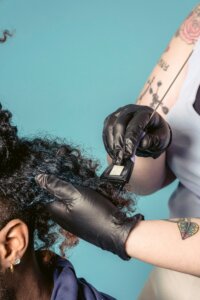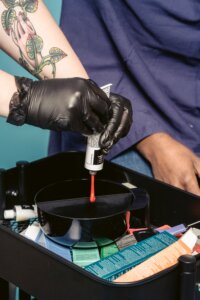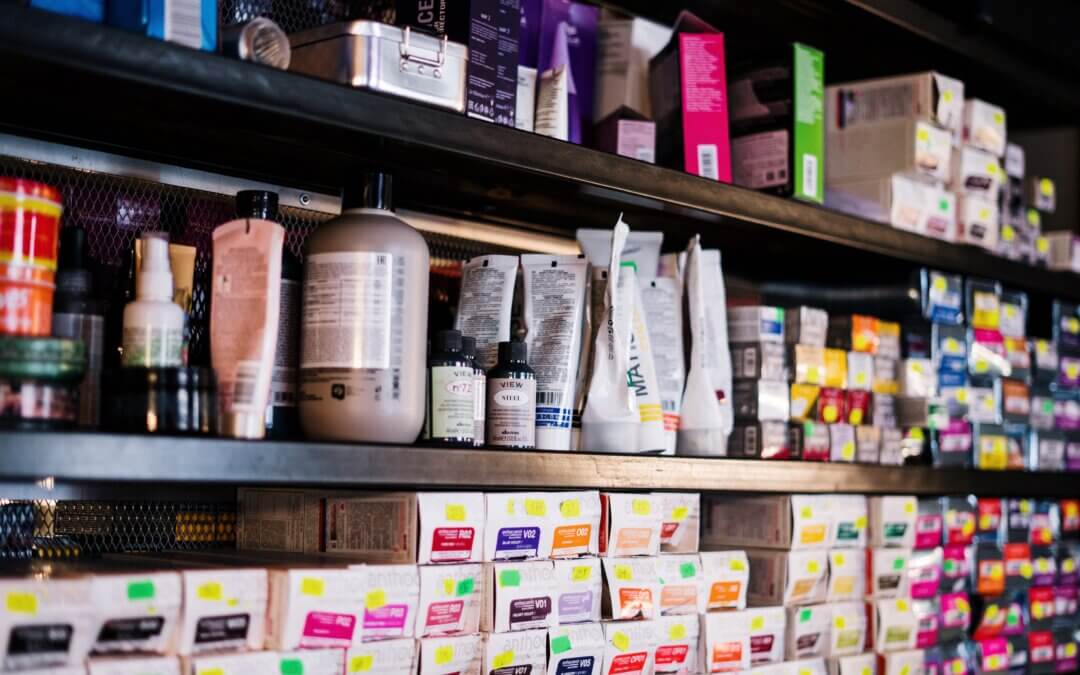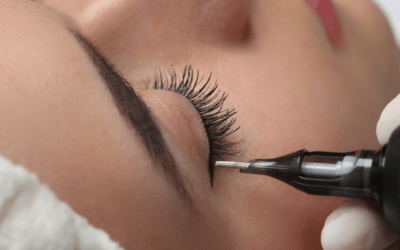All you need to know about a hair colour patch test
You book a colour appointment in a hair salon you’ve never been to before. You get that annoying notification about a patch test having to be done. You think: oh nooo, not again. I’ve been colouring my hair for years. I’ve never had any kind of allergic reaction to hair dye. In fact, I’ve never had any allergic reactions to anything before. Please can you just do the colour? I really need it today. I can’t wait 48 hours. I’m happy to sign anything. Please please, please.

Sounds familiar?
We know the feeling. And we understand. We get you. But … and here’s the big but.
As annoying and inconvenient as it is for both you AND the salon, a professional hair salon will kindly decline. Here’s why.
An allergy is a reaction the body has to a particular substance.
Many permanent and semi-permanent hair dyes contain a chemical called paraphenylenediamine (PPD), which is a known irritant and allergen. Darker coloured dyes contain a higher level of PPD. PPD is the cause of most reactions to hair dye. (NHS)
Hair dyes containing PPD are safe to use if safety instructions are followed. These products are strictly regulated and there’s a maximum limit to the amount of PPD the product can contain.
If you or worse, your hairdresser ignore the safety instructions that come with the dye, you could be at risk of a serious reaction.
According to NHS UK,
you’re particularly at risk if you have (or have previously had) a black henna tattoo. These temporary tattoos should be avoided because the paste often contains high levels of PPD, which can increase the risk of an allergic reaction the next time you’re exposed to it. So, you could develop a life-threatening allergic reaction when you next use PPD hair dye.
Reactions to PPD can range from mild irritation in the scalp to an allergic reaction that can potentially trigger serious symptoms throughout the body.
Mild Irritation to Hair Dye
If you’re mildly irritated by PPD, you may find that your scalp, neck, forehead, ears or eyelids become irritated and inflamed after using hair dye.
The skin exposed to the PPD may become red, swollen, blistered, dry, thickened and cracked. You may feel a burning or stinging sensation.
Symptoms will usually appear within 48 hours, although strong irritants may cause your skin to react immediately.
If you’re allergic to PPD, your scalp and face may feel itchy and start to swell.
PPD may also trigger symptoms throughout your body, such as itching, nettle rash and generally feeling ill.
These symptoms may not develop until hours, or even days, later.
Severe Allergic Reaction to Hair Dye
A severe allergic reaction that develops within minutes is called “anaphylactic shock”. Signs of it include:
- itchy skin or a raised, red skin rash
- swollen eyes, lips, hands and feet – the eyelids can swell so much that the eyes close
- feeling lightheaded or faint
- swelling of the mouth, throat or tongue, which can cause breathing and swallowing difficulties
- wheezing
- tummy pain, nausea and vomiting
- collapsing and becoming unconscious
You see, a seemingly harmless colour appointment could turn into a nasty horror story that no one wishes on anyone.
Sadly, we’ve heard and seen horror stories in the industry. We’ve had clients who developed a sensitivity to something they’ve used on their hair/scalp forever. And we’ve had clients who had an unexpected reaction after a patch test. Obviously, we didn’t proceed and when appropriate, we advised a different kind of hair dye to be used.
And interestingly, during the pandemic, we’ve heard about more unexpected sensitivities and allergies being developed in clients who’ve had Covid and/or the vaccine. Perhaps the immune system somehow reacts a bit differently after being exposed to the virus? We’re not sure, but we’re all the more cautious.
The point is: that your health has to take priority. Your safety is not something we’ll compromise for a few bucks. I-t’-s n-o-t w-o-r-t-h i-t.
Read on to learn about how a patch test is performed.
To help ensure that you leave the salon with the colour result you desire For each colour client, the hairdresser conducts a thorough colour consultation.
This will help with the decision of which colour service is most suitable, and determine if there is a need to carry out an allergy alert test prior to the colour service.

Colouring safely
It is rare for a client to have any problems when colouring hair. However, just like many other products in common use, such as certain foods or materials, hair colour can cause allergic reactions in some people.

How your hairdresser performs a hair colour patch test
After your consultation, your hairdresser might need to carry out a patch test before proceeding with a colour service.

Steps
- The hairdresser weighs a dab of hair dye of the exact same shade you chose during the consultation into a mixing bowl.
- The hairdresser then mixes the hair dye with the appropriate developer and mixes it into a smooth consistency.
- Using the corner of a colour brush, they take a small amount of the mixed colour. and apply a small patch below the crook of the elbow and/or behind your ear.
- The colour must be left on and uncovered for 45 minutes. It’s the usual processing time of a dye.
- After 45 minutes, the area has to be rinsed with lukewarm water and pat dry with a clean towel.
- If you didn’t develop any reaction whilst in our chair, we’ll ask you to inform us of how you’re doing in the next 2 days and tell us about the result of the test. We’ll then book the actual colour appointment for you. Hallelujah!

Your hair colour patch test result
If there is no reaction to the allergy alert test within 48 hours, the hairdresser can proceed with the colour service.
If there is any redness, burning or itching, during or after 48 hours, you have to rinse immediately and should seek and follow medical advice. Obviously, the colour must not be applied.
It’s normal to observe some skin staining due to the applied colour. This will also subside within 48 hours after the allergy alert test.
If you develop a reaction to hair dye, even just a mild one, you should stop using products containing PPD altogether, as there’s a risk you could develop a more severe reaction in the future.
Try switching to a safer alternative, such as a non-permanent, PPD-free hair dye – but be aware that it’s still possible to develop a reaction to this.

We hope this explains why an hair colour allergy test must be taken seriously.
If you have any questions regarding hair dye or would like a free colour consultation with one of our hairdressers, head to this page and get in touch with our expert colourists.
Remember that beauty is important, but your health is always a top priority.
Love,
Figaro London 💚
Source of information: (NHS)






